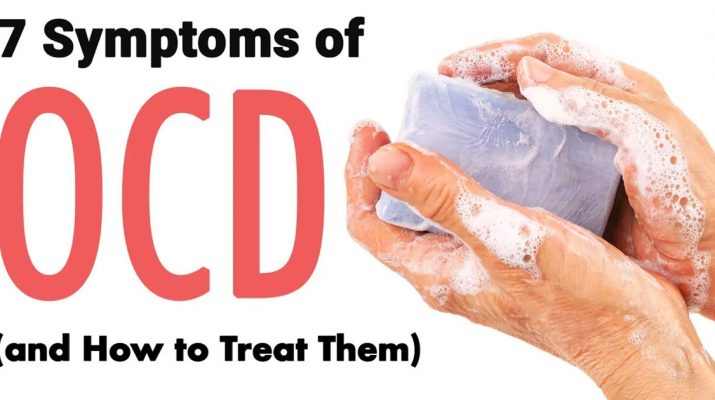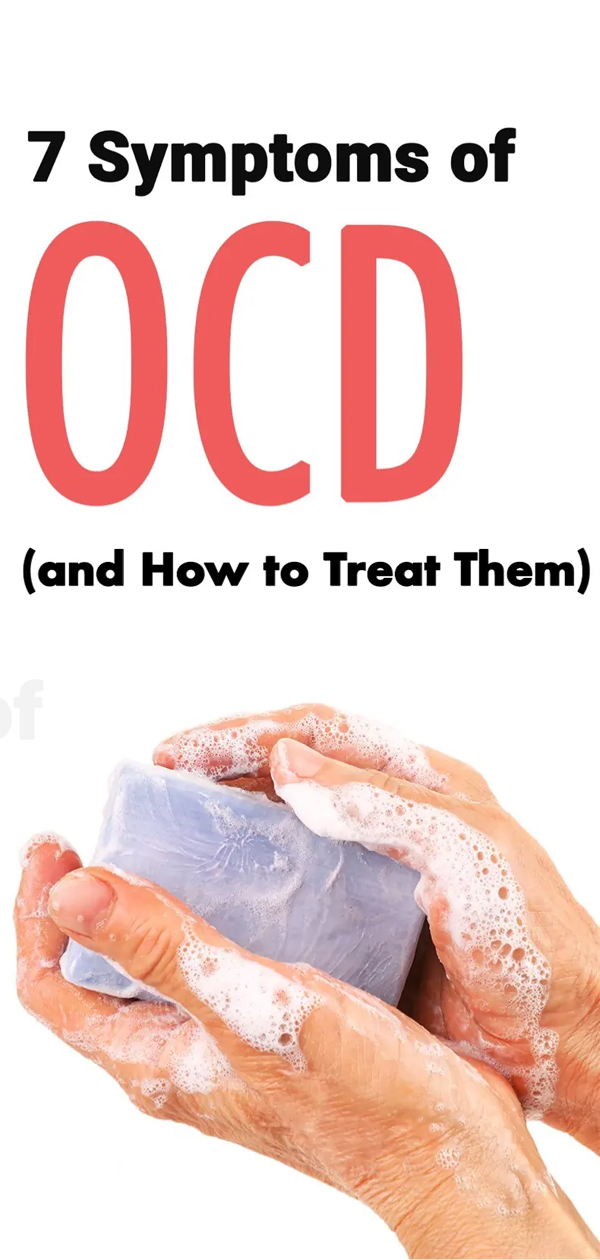Obsessive-compulsive disorder, otherwise known as OCD, affects approximately one in every 40 adults in the United States. According to the World Health Organization, this disease is a leading cause of illness-related disability globally.
Obsessive-compulsive disorder OCD symptoms are characterized by a set of obsessions which relate to subsequent compulsions. However, some people may only experience one or the other.
Although many sufferers may not realize it, these obsessions and compulsions can interfere significantly with their life. This article aims to explore some of the most common obsessive-compulsive disorder(OCD) symptoms and what experts in the field say are the best ways of approaching them.
Here Are 7 Common Ocd Symptoms (And How To Deal With Them):
1. Obsessions
An OCD obsession is an unwanted thought that occurs persistently and repeatedly. These thoughts are intrusive to the sufferer, causing them anxiety and stress. Obsessions usually stem from a person’s fears, needs, aggression, or unwanted thoughts.
According to Dr. Debra Kissen, the clinical director of the Light on Anxiety Treatment Center of Chicago, the first step in treating the obsession is to acknowledge the fears that are causing the obsession. ERP therapy, or exposure and response prevention therapy, is the best way of treating obsessions.
This therapy requires the sufferer to slowly increase their exposure to their fear. Getting support to treat obsessions is also important, as voicing obsessive thoughts out loud can lessen the power of the thought.
2. Compulsions
Compulsions generally stem from an obsession, wherein the obsession triggers the compulsion. A compulsion is a repetitive behavior that the OCD sufferer feels strong urges to perform, with the belief that doing so will reduce or prevent their anxiety or fears of something bad happening.
Compulsions often take the form of rules or rituals that are triggered by obsessive thoughts. Experts in the field of OCD say that preventing compulsions requires individuals to resist performing them. Cognitive behavioral therapy is the best treatment for OCD. ERP therapy is also generally is successful at helping people resist their compulsions. These therapies enable the individual to gradually build a tolerance to these thoughts and urges.
3. Obsessive Washing And Cleaning
Obsessive washing and cleaning is very common among Obsessive compulsive disorder OCD symptoms. This can take the form of obsessively cleaning their home, or washing their hands until their skin becomes raw.
Among the best ways to treat this symptom is for individuals to relax before they engage in the compulsion. As the compulsion typically stems from a desire to reduce anxiety. Therefore, taking a moment to relax before engaging in the compulsion can significantly induce its impact. Additionally, the sufferer may examine their wider set of anxieties to target them at the core.
This helps to eliminate the need for the compulsion. Doing so should be done step-by-step, as people who suffer from OCD may experience similar symptoms of withdrawal as individuals who are withdrawing from substance addiction.
4. Checking
Repetitive checking is also quite common among obsessive-compulsive disorder OCD symptoms. This may include repetitively and obsessively checking doors and electronic devices to make sure they’re locked or turned off. According to Paul R. Munford Ph.D., of the Cognitive Behavior Therapy Center for OCD and Anxiety, ERPA, or exposure ritual prevention and awareness therapy, is the best way to approach this symptom.
Dr. Munford says the sufferer should practice their exposure to the trigger both in real and/or imaginary circumstances, and then practice refraining from engaging in those compulsions. Lastly, the sufferer should practice acceptance of their thoughts and feelings, and be understanding the relationship between them.
5. Counting
This symptom often manifests itself by suffers feeling an urge to repetitively count to a certain number or in a certain pattern. According to Mark Dombeck Ph.D., this is a very common obsession among OCD sufferers due to its ability to effectively reduce their anxiety.
These types of obsessive-compulsive disorder(OCD) symptoms can be rather complex, and therefore Dr. Dombeck recommends that people experiencing these symptoms seek the help of a professional psychiatrist. Treatment may involve medication and behavioral and cognitive-behavioral psychotherapy.
6. Routines And Rituals
A routine or ritual may manifest itself symptomatically. For example in OCD suffered me repetitively repeat a phrase, prayer, or word. According to AnxietyBC, there are several key ways in which rituals and routines can be interrupted.
First, the sufferer can opt to change the ritual, which shows the OCD that the sufferer is the one who is in charge. This may involve changing how the ritual is done rather than avoiding it altogether. Another way is to shorten the ritual or working to delay the ritual.
For example, the individual may choose to engage in the ritual, but opt to do it later rather than immediately, as the OCD demands. Lastly, performing the ritual at a slower rate may also help to build tolerance, as OCD sufferers typically feel rushed to perform these rituals.
7. Reassurance
According to the OCD Center of Los Angeles, OCD compulsive strategies are typically implemented by sufferers in order to feel reassurance and certainty that their fear or obsession will not manifest itself. However, seeking this reassurance can worsen OCD symptoms as they reinforce compulsive behaviors. This can create an endless cycle for the OCD sufferer. In a sense, reassurance creates an addictive cycle for the individual.
The OCD Center of Los Angeles suggests that the best approach to treating this symptom is to acknowledge that this cycle is taking place and to work to stop it immediately once it is noticed. Cognitive-behavioral therapy techniques, including mindfulness and acceptance, can help individuals learn how to cope with their uncomfortable thoughts and feelings without obsessively and compulsively responding to them.
Final Thoughts
The onset of OCD can happen at any time although often starts in a person’s teens or young adults years, and OCD symptoms can become more severe over time. Therefore treatment of this condition is imperative, as this condition can become disabling. A person who is experiencing obsessive thoughts and compulsions that are interfering with or negatively impacting the quality of their life should seek the help of mental health professional.
If you are undergoing treatment for OCD currently, take caution not to change your treatment or alter your doctors plan without first consulting your healthcare professional.


